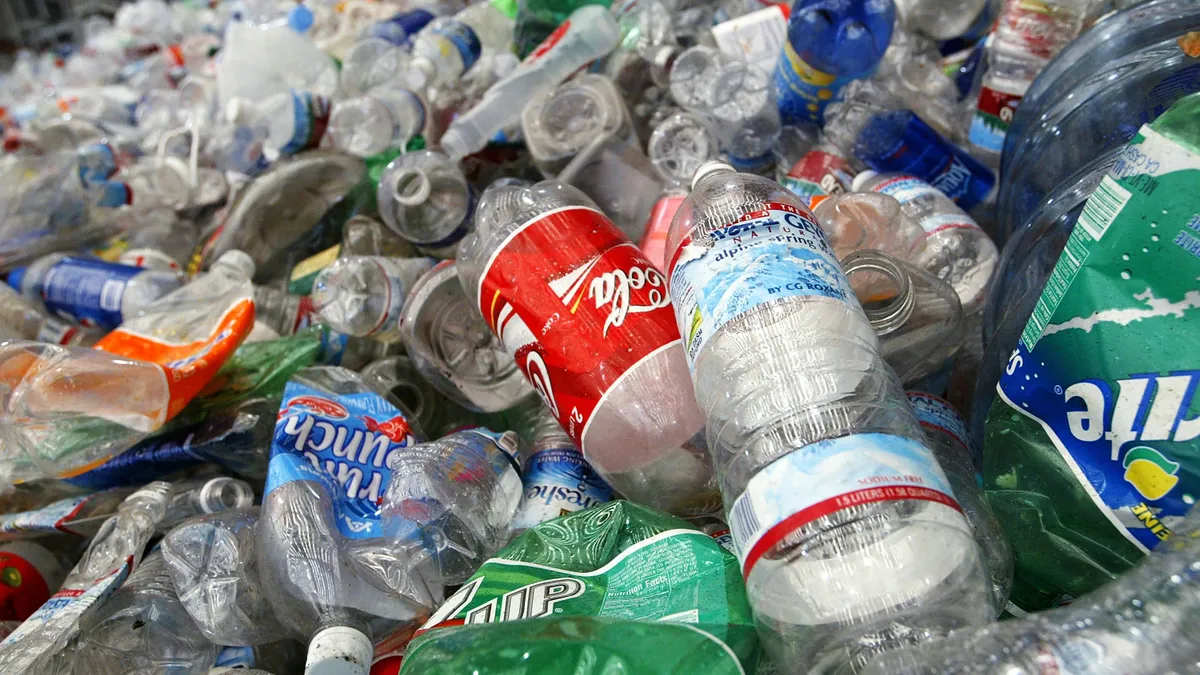California’s statewide recycling rate declined in 2021, and Californians disposed of more waste than the previous year, according to preliminary data released by CalRecycle on Tuesday.
California generated 76.7 million tons of material in 2021, slightly less than in 2020, according to a news release. Of that, about 46 million tons were disposed, compared with 44.9 million tons in 2020. The state recycled 30.7 million tons in 2021, bringing the recycling rate down to 40% compared with 42% in 2020. The agency expects to release its finalized annual report in December.
The recent passage of new recycling and waste diversion laws are expected to help improve those numbers in coming years, said CalRecycle Director Rachel Machi Wagoner in an interview on America Recycles Day. Additional funding for infrastructure and bottle bill improvements, as well as overall waste reduction strategies, are also on deck, she said.
Machi Wagoner wouldn’t comment on what might have contributed to lower recycling rates in 2021, saying it would be “conjecture,” but said the state’s focus is on improving all aspects of the waste and recycling system and creating a reliable circular economy.
“It's really important to me that we get that [disposal] number down and work across the board on organics, recyclable goods and things that aren't recyclable,” she said. “We’ll be looking at what we need to do in terms of changes in our system.”
California is in the midst of working toward ambitious waste reduction and recycling goals that will require state investment and programs, Wagoner said. It aims to reduce organic waste disposal 75% by 2025. Meanwhile, California’s recycling rate goal is 75%.
According to highlights CalRecycle provided from the state’s waste characterization study, Californians have recently reduced the tonnage of organics they disposed — about 11.3 million tons in 2021 compared with almost 13.4 million tons the last time the state conducted the study in 2018.
However, more plastic is going to disposal than in 2018, according to the report. In 2021, about 5.45 million tons were disposed, compared with 4.52 million in 2018.
The state passed a sizable list of recycling and waste diversion legislation this year that CalRecycle touted as a package of “unprecedented circular economy reforms.” That includes SB 54, an extended producer responsibility bill for packaging thought to be the most expansive in the country.
Legislators also passed several updates to the state’s bottle bill, including one adding wine and spirits bottles, which proponents say may help increase the overall recycling rate. However, Wagoner said more needs to be done to provide places to return containers.
“The frustration of consumers in certain parts of the state is that they don't have access to this program, so our goal is to have 100% access across the state,” she said.
The state legislature recently approved $391 million over three years to expand the program. This includes elements like market development strategies, grants for recycled glass collection and recycling, and funding to install reverse vending machines, she said.
Wagoner said attendees at recent public meetings have also called for more funding and resources for infrastructure for beverage containers and other recycled materials, as well as for organics. The waste and recycling industry will play an important role in helping the state make improvements, she said.
“We want to highlight new sorting technology and composting technology or codigestion technology,” she said. “Partnerships are absolutely critical and we are really looking for the waste industry to engage in creative problem solving with the department on this.”











